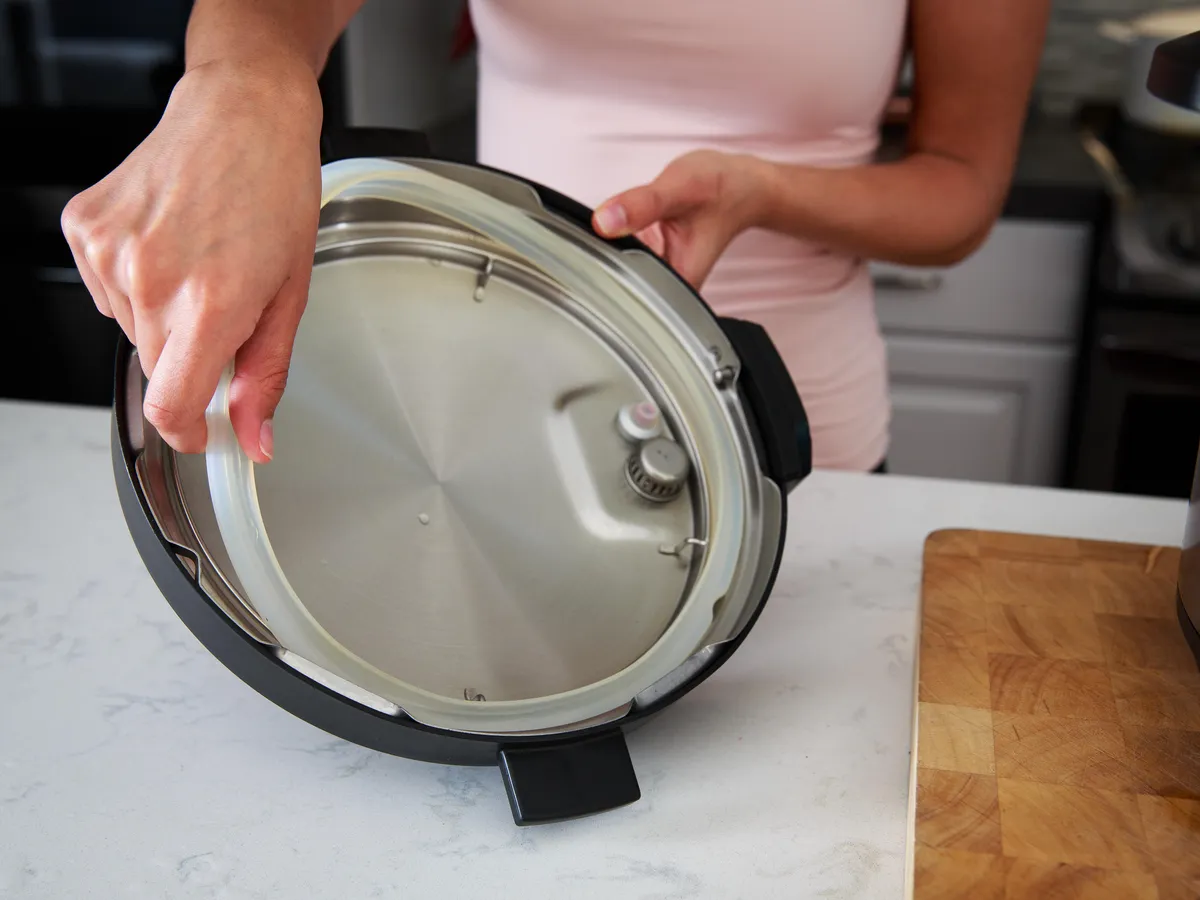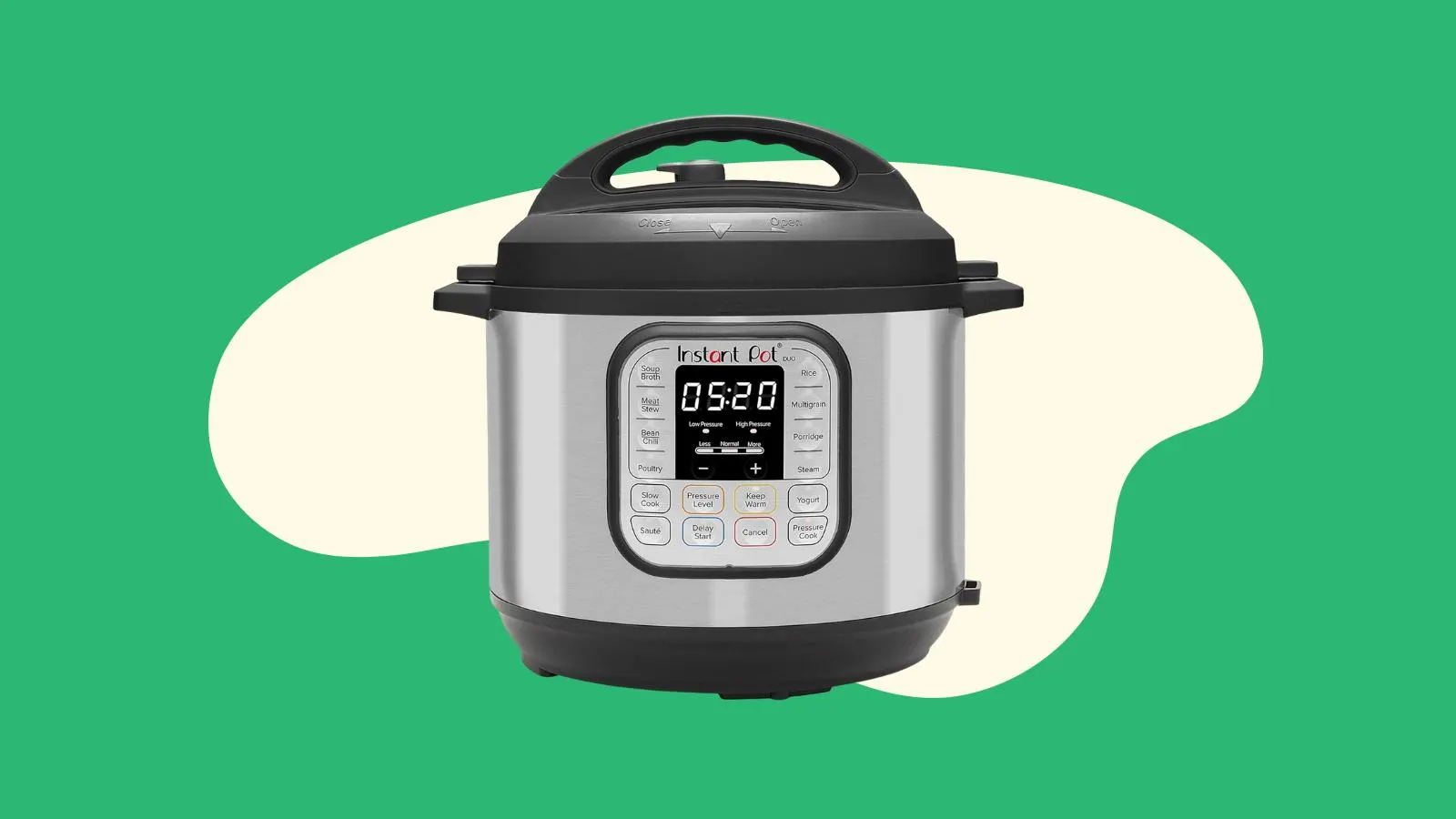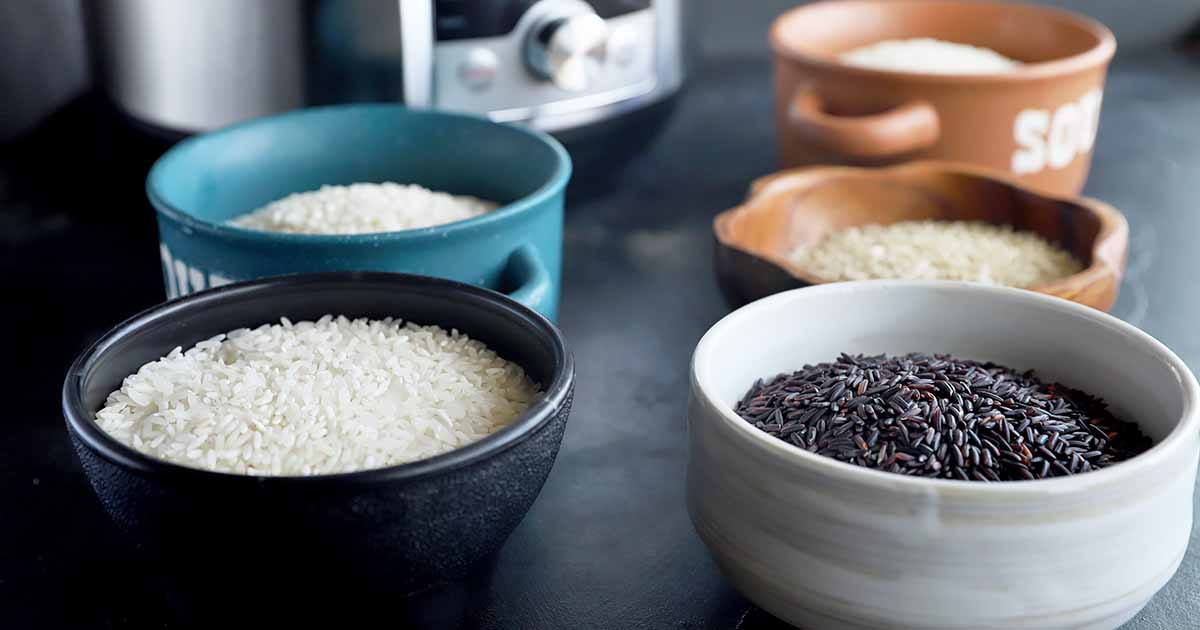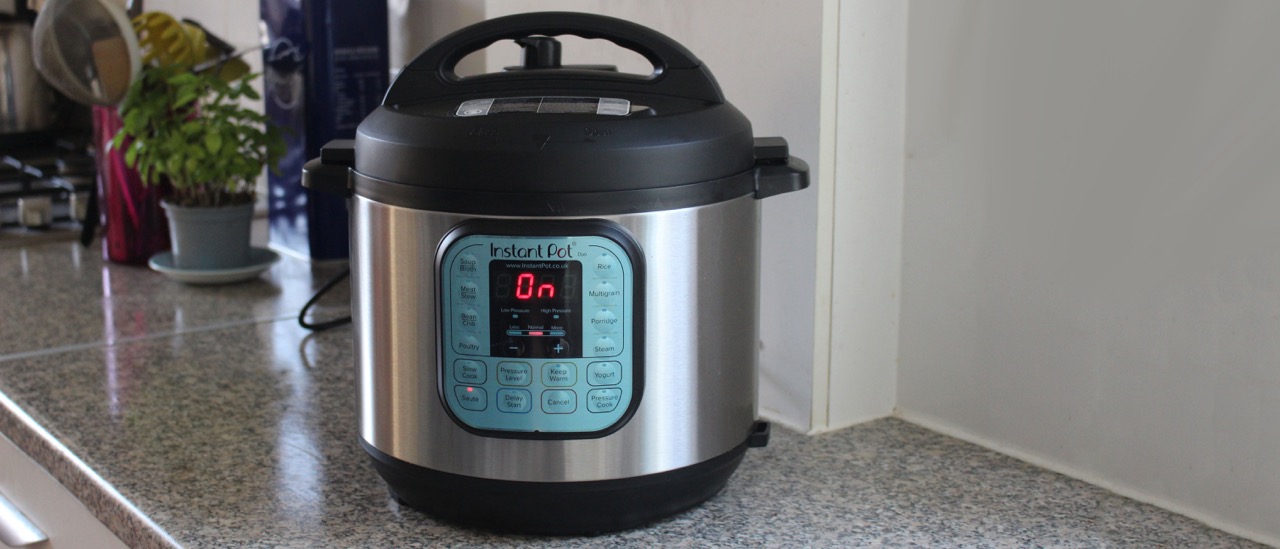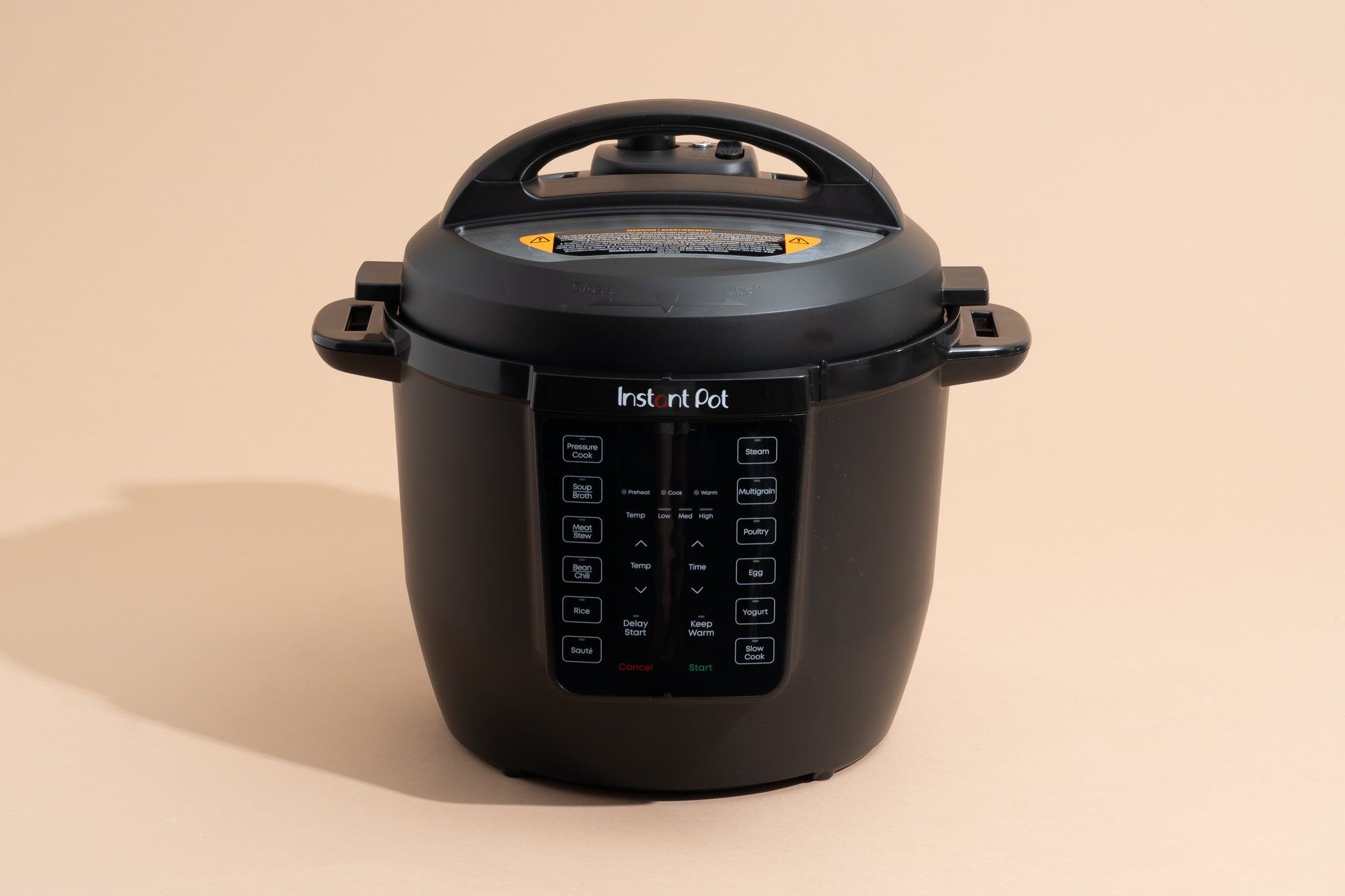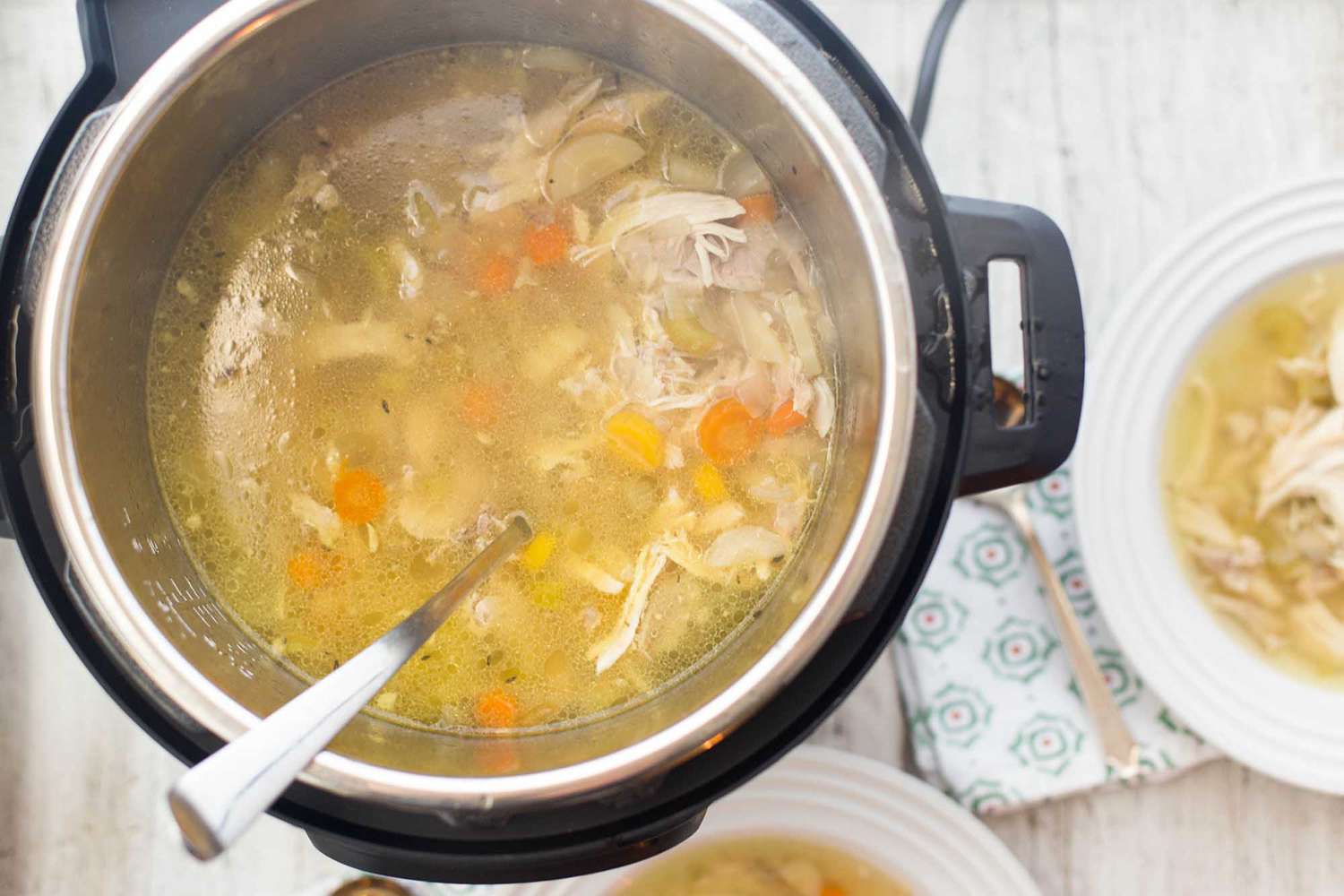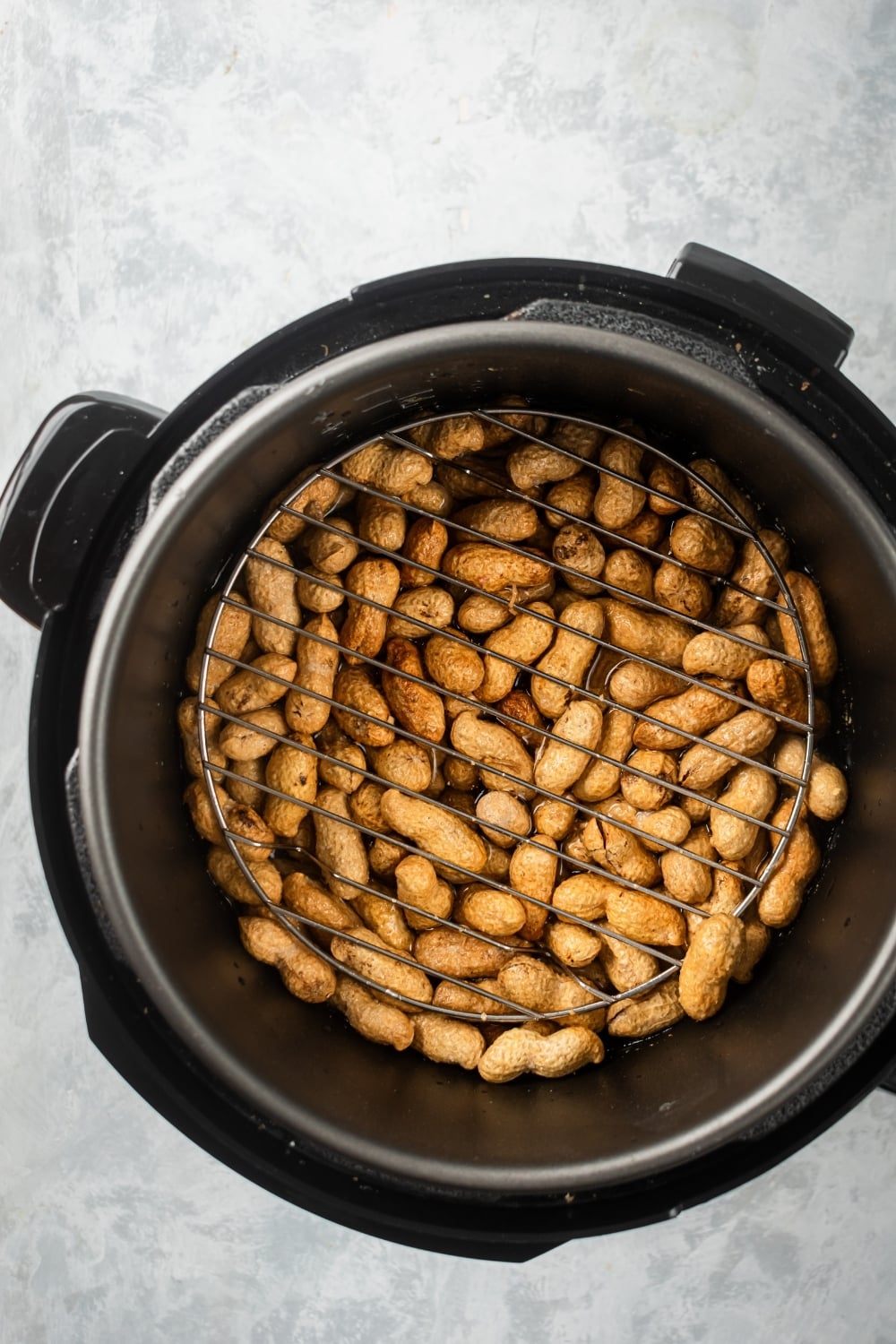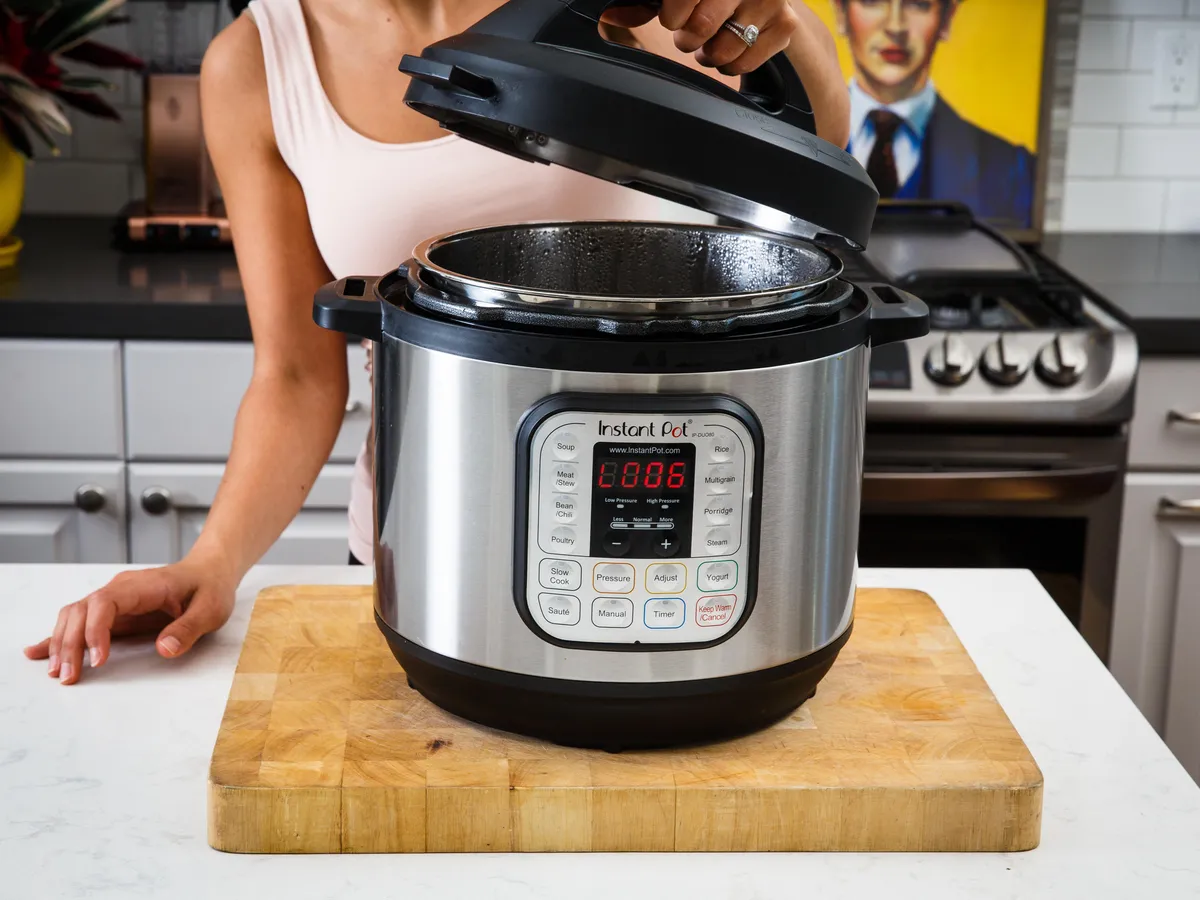Introduction
An electric pressure cooker is a modern kitchen appliance that has gained popularity for its ability to quickly cook delicious meals with minimal effort. However, frequent use of an electric pressure cooker can sometimes lead to unpleasant odors that linger even after cooking. These odors can be caused by various factors, such as the residue from previous meals, trapped steam, or the accumulation of food particles in hard-to-reach areas.
In this article, we will explore the reasons behind the lingering smell in an electric pressure cooker and discuss effective methods to remove these odors. We will also share some important safety precautions to keep in mind while cleaning your pressure cooker.
When it comes to cleaning your electric pressure cooker, it is essential to use safe and non-toxic methods. We will provide you with multiple methods using common household items, such as vinegar, baking soda, lemon, and distilled white vinegar. These methods are not only effective at eliminating smells but are also gentle on the appliance and environmentally friendly.
By following the steps outlined in this article, you will be able to get rid of unwanted smells from your electric pressure cooker, ensuring that your meals always taste fresh and delicious. Let’s dive into the cleaning process and discover how you can maintain a clean and odor-free electric pressure cooker.
Why does an electric pressure cooker smell?
It’s not uncommon for an electric pressure cooker to develop odors over time, especially if it is used frequently. There are a few reasons why these smells can arise:
- Food residue: When you cook food in an electric pressure cooker, some of the flavors and aromas from the ingredients can stick to the inner pot and lid. If these residues are not properly cleaned, they can build up and create unpleasant smells.
- Trapped steam: During the cooking process, steam is released and trapped inside the pressure cooker. When the lid is opened, some of this steam can linger and cause a lingering smell.
- Accumulated food particles: Bits of food or liquid can sometimes get stuck in the small crevices or hard-to-reach areas of the pressure cooker. Over time, these particles can decompose and emit unpleasant odors.
To ensure that your electric pressure cooker remains odor-free, regular and thorough cleaning is necessary. In the following sections, we will outline different methods to effectively clean your pressure cooker and eliminate any unwanted smells.
It’s important to note that if your electric pressure cooker has a persistent smell even after cleaning, it could be a sign of a more significant issue, such as a faulty gasket or a buildup of residue in the valves. In such cases, it may be best to consult the manufacturer or seek professional help.
Safety Precaution
Before you begin cleaning your electric pressure cooker, it’s crucial to take some safety precautions to ensure your well-being and the longevity of your appliance. Consider the following steps:
- Unplug the cooker: Always unplug your electric pressure cooker from the power source before cleaning. This eliminates the risk of electrical shocks or accidents.
- Allow it to cool: Give your pressure cooker enough time to cool down completely before attempting to clean it. Trying to clean a hot cooker can result in burns or other injuries.
- Remove all accessories: Take out any removable parts, such as the inner pot, sealing ring, steam rack, and any other components. This will make the cleaning process more accessible and thorough.
- Read the manufacturer’s instructions: Refer to the manual or the manufacturer’s guidelines for specific cleaning instructions. Different models may have different requirements, and it’s essential to follow these guidelines to avoid any damage to your pressure cooker.
- Use caution with sharp tools: If you need to scrape off any stubborn residue, be careful when using sharp tools. Avoid using tools that can scratch or damage the inner surface of the cooker.
- Properly dispose of cleaning solutions: If you are using any cleaning solutions, make sure to dispose of them according to local regulations. Avoid pouring them down drains or toilets unless specifically stated on the product label.
- Protect your hands: Wear protective gloves while cleaning to protect your hands from hot water, cleaning solutions, or any sharp edges.
By taking these safety precautions, you can ensure that you clean your electric pressure cooker without risking any harm to yourself or the appliance. Let’s now explore the various cleaning methods to remove the lingering smells from your pressure cooker.
How to Clean the Electric Pressure Cooker
Cleaning your electric pressure cooker regularly is essential to maintain its performance and eliminate any lingering odors. Here are some effective methods for cleaning your electric pressure cooker:
Method 1: Vinegar and water solution
One of the simplest and most effective ways to clean your pressure cooker is by using a vinegar and water solution. Follow these steps:
- Mix equal parts of white vinegar and water in the inner pot of the pressure cooker.
- Place the inner pot with the solution back into the pressure cooker and close the lid.
- Select the steam or pressure cook setting and set the timer for 5 minutes.
- Once the timer goes off, allow the pressure to release naturally and carefully open the lid.
- Remove the inner pot and discard the vinegar and water mixture.
- Rinse the inner pot thoroughly with water and wipe it dry with a clean cloth.
Method 2: Baking soda and water paste
Baking soda is known for its cleaning properties and can help eliminate stubborn stains and odors. Here’s how to clean your pressure cooker with a baking soda paste:
- In a small bowl, mix baking soda with enough water to form a thick paste.
- Apply the paste to the inner pot, focusing on areas with stains or strong odors.
- Let the paste sit for about 15 minutes to allow it to work its magic.
- Using a non-abrasive sponge or cloth, gently scrub the pot to remove any residue.
- Rinse the pot thoroughly with water and dry it with a clean cloth.
Method 3: Lemon and water mixture
Lemon is a natural deodorizer and can leave your pressure cooker smelling fresh. Follow these steps:
- Cut a lemon into slices and squeeze the juice into the inner pot.
- Add water to the pot, filling it about halfway.
- Place the inner pot back into the pressure cooker and close the lid.
- Set the pressure cooker to steam or pressure cook for 5 minutes.
- Allow natural pressure release and carefully open the lid.
- Remove the inner pot, discard the lemon and water mixture, and rinse the pot thoroughly with water.
Method 4: Distilled white vinegar soak
For stubborn stains or lingering odors, you can try a vinegar soak. Here’s how:
- Pour distilled white vinegar into the inner pot, filling it about halfway.
- Let the pot sit for a few hours or overnight to allow the vinegar to loosen any residue.
- After soaking, scrub the pot with a non-abrasive sponge or cloth to remove any remaining stains or odors.
- Rinse the pot thoroughly with water and dry it with a clean cloth.
Method 5: Steam cleaning using vinegar
To give your pressure cooker’s interior a thorough clean, you can steam clean it using vinegar. Follow these steps:
- Fill the inner pot with equal parts of water and white vinegar.
- Place the pot inside the pressure cooker and close the lid.
- Select the steam or pressure cook setting and set the timer for 10 minutes.
- Once the cooking time is up, allow for natural pressure release.
- Open the lid carefully and remove the inner pot.
- Discard the vinegar and water mixture, rinse the pot, and wipe it dry.
Remember to consult your pressure cooker’s manual for any specific cleaning recommendations from the manufacturer. Following these methods regularly will help keep your electric pressure cooker clean and free from unwanted smells.
Method 1: Vinegar and Water Solution
A simple and effective method to remove unpleasant smells from your electric pressure cooker is by using a vinegar and water solution. Follow these steps:
- Mix equal parts of white vinegar and water in the inner pot of the pressure cooker. For example, you can use 1 cup of vinegar and 1 cup of water.
- Place the inner pot with the vinegar and water mixture back into the pressure cooker and close the lid securely.
- Select the steam or pressure cook setting and set the timer for approximately 5 minutes.
- Allow the pressure cooker to reach the desired cooking time, and once the timer goes off, let the pressure release naturally.
- Carefully open the lid, making sure to avoid any residual steam that might still be present.
- Remove the inner pot from the pressure cooker and discard the vinegar and water mixture.
- Rinse the inner pot thoroughly with water, ensuring that all traces of vinegar are removed.
- Dry the inner pot with a clean cloth or allow it to air dry before using it again.
The acidity of the vinegar helps to break down any food residues or odors that may have accumulated in the pressure cooker, leaving it fresh and clean. The steam generated during the cooking process also helps to sanitize the inner pot, ensuring a hygienic cooking environment.
It’s important to note that the smell of vinegar may be strong initially, but it will dissipate once the pressure cooker is rinsed and dried. Additionally, vinegar is non-toxic and safe to use in food preparation areas.
Regularly utilizing this vinegar and water cleaning method will help keep your electric pressure cooker smelling fresh and functioning optimally. Remember to consult your pressure cooker’s manual for any specific cleaning instructions or precautions suggested by the manufacturer.
Method 2: Baking Soda and Water Paste
An effective way to tackle stubborn stains and unpleasant odors in your electric pressure cooker is by using a baking soda and water paste. Follow these steps:
- In a small bowl, mix baking soda with enough water to create a thick paste.
- Apply the paste to the inner pot of the pressure cooker, focusing on areas with stains or strong odors.
- Allow the paste to sit on the stains for approximately 15 minutes. This allows the baking soda to work its magic and break down the residues.
- Using a non-abrasive sponge or cloth, gently scrub the pot, paying extra attention to the areas with stubborn stains.
- Rinse the inner pot thoroughly with water, ensuring that all traces of the baking soda paste are removed.
- Dry the inner pot with a clean cloth or allow it to air dry.
Baking soda is known for its natural cleaning and deodorizing properties. It helps to lift stains and absorb odors, leaving your pressure cooker clean and odor-free. The mild abrasive nature of baking soda also aids in removing any stubborn residue without scratching the surface of the pot.
If you encounter particularly stubborn stains or odors, you can leave the baking soda paste on the affected areas for a longer period before scrubbing. However, avoid using abrasive tools that can damage the inner surface of the pot.
Regularly using this baking soda and water paste method will help keep your electric pressure cooker looking and smelling fresh. Remember to consult your pressure cooker’s manual for any specific cleaning instructions or precautions recommended by the manufacturer.
Method 3: Lemon and Water Mixture
If you’re looking for a natural and refreshing way to clean your electric pressure cooker and eliminate odors, using a lemon and water mixture can be highly effective. Follow these simple steps:
- Cut a lemon into slices and squeeze the juice into the inner pot of your pressure cooker.
- Add water to the inner pot, filling it about halfway.
- Place the inner pot back into the pressure cooker and ensure the lid is properly closed.
- Select the steam or pressure cook setting and set the timer for around 5 minutes.
- Allow the pressure cooker to complete its cycle and then let the pressure release naturally.
- Carefully open the lid and remove the inner pot containing the lemon and water mixture.
- Discard the lemon and water mixture, and rinse the inner pot thoroughly with water.
The natural citric acid in lemons acts as a powerful cleaning agent, helping to remove stains and neutralize any unpleasant smells in the pressure cooker. The steam generated during the cooking process also helps to sanitize the inner pot, leaving it fresh and clean.
After cleaning with the lemon and water mixture, you may notice a refreshing citrus aroma in your pressure cooker. This natural scent is a pleasant alternative to chemical cleaners and can enhance the overall cooking experience.
It’s important to note that if your pressure cooker has a non-removable seal or gasket, it’s advisable to consult the manufacturer’s instructions before using any natural cleaning agents like lemon.
By using this simple yet effective method regularly, you can keep your electric pressure cooker clean, odor-free, and ready to prepare delicious meals for you and your loved ones.
Method 4: Distilled White Vinegar Soak
For stubborn stains or lingering odors in your electric pressure cooker, a vinegar soak can be a highly effective method to thoroughly clean and refresh the appliance. Here’s how to do it:
- Pour distilled white vinegar into the inner pot, filling it about halfway.
- Allow the vinegar to soak in the pot for a few hours or overnight. This gives the vinegar enough time to break down any residue or odors.
- After soaking, use a non-abrasive sponge or cloth to scrub the pot, focusing on areas with stubborn stains.
- Rinse the pot thoroughly with water, ensuring that all traces of the vinegar are removed.
- Dry the pot with a clean cloth or allow it to air dry before using it again.
Distilled white vinegar has natural cleaning and deodorizing properties, making it effective in removing tough stains and eliminating odors. The acidity in vinegar helps to break down residue and sanitize the inner pot, leaving it fresh and ready for use.
It’s important to note that if your electric pressure cooker has a non-removable seal or gasket, check the manufacturer’s instructions before using vinegar or any acidic solution to avoid potential damage.
By using this vinegar soak method regularly, you can maintain a clean and odor-free electric pressure cooker, ensuring that you always have a fresh cooking environment for your meals.
Method 5: Steam Cleaning Using Vinegar
To give your electric pressure cooker a thorough cleaning and sanitize the interior, steam cleaning using vinegar is an effective method. Follow these steps:
- Fill the inner pot of your pressure cooker with equal parts of water and white vinegar.
- Place the inner pot back into the pressure cooker and ensure the lid is properly closed.
- Select the steam or pressure cook setting on your pressure cooker and set the timer for approximately 10 minutes.
- Allow the pressure cooker to complete the cooking cycle, and once the timer goes off, let the pressure release naturally.
- Carefully open the lid and remove the inner pot, which now contains the vinegar and water mixture that has created steam.
- Discard the vinegar and water mixture and rinse the inner pot thoroughly with water.
- Dry the inner pot with a clean cloth or allow it to air dry before using it again.
Steam cleaning using vinegar helps to remove stubborn residue, grease, and odors from your electric pressure cooker. The combination of heat and vinegar creates steam, which acts as a natural sanitizer, effectively cleaning and freshening the interior of the pot.
Vinegar is a non-toxic and environmentally friendly cleaning agent that is safe to use in your kitchen. However, it’s important to note that if your pressure cooker has a non-removable seal or gasket, consult the manufacturer’s instructions before using vinegar or any acidic solution.
By incorporating this steam cleaning method into your regular maintenance routine, you can keep your electric pressure cooker sanitary, odor-free, and ready to use for your next delicious meal.
Other Tips for Preventing Smells in the Future
While regular cleaning is essential for keeping your electric pressure cooker odor-free, there are additional steps you can take to prevent smells from developing in the first place. Consider the following tips:
- Properly ventilate: Ensure that there is proper ventilation in your kitchen when using the pressure cooker, especially when cooking foods with strong odors. Opening a window or using a kitchen exhaust fan can help dissipate any lingering smells.
- Clean the sealing ring: The sealing ring is a vital component of your pressure cooker that can absorb odors over time. Regularly remove the sealing ring and clean it according to the manufacturer’s instructions to prevent any smells from transferring to your food.
- Wipe down the exterior: Occasionally wipe down the exterior of your pressure cooker with a damp cloth and mild detergent. This helps remove any spills or stains that may contribute to unpleasant odors.
- Avoid cooking strong-smelling foods consecutively: If possible, try not to cook strong-smelling foods back to back in your pressure cooker. This allows any residual odors to dissipate before the next use.
- Use a trivet or steamer basket: When cooking foods with strong odors, using a trivet or steamer basket can help elevate the food, preventing direct contact with the bottom of the inner pot and reducing the chances of lingering smells.
- Store pressure cooker properly: Ensure that your pressure cooker is stored in a clean and dry environment when not in use. This helps prevent the buildup of mold, mildew, or other odorous substances.
- Regularly clean the vents and valves: Take the time to clean the vents and valves of your pressure cooker according to the manufacturer’s instructions. The accumulation of food particles or residue in these areas can contribute to unpleasant smells.
By following these tips, you will be able to maintain a fresh-smelling electric pressure cooker and enjoy the true flavors of your meals without any unwanted odors.
Remember to always consult the manufacturer’s instructions and guidelines specific to your pressure cooker model for the best cleaning and maintenance practices.
Conclusion
Keeping your electric pressure cooker clean and free from unpleasant smells is essential for ensuring that your meals are cooked to perfection and taste delicious. By following the effective cleaning methods outlined in this article, you can easily eliminate lingering odors and maintain a hygienic cooking environment.
We explored various methods such as using a vinegar and water solution, baking soda paste, lemon and water mixture, vinegar soak, and steam cleaning with vinegar. Each method has its unique benefits and can be utilized based on the severity of the odor or stain.
In addition to the cleaning methods, we also discussed important safety precautions to follow, such as unplugging the cooker before cleaning, allowing it to cool down, and protecting your hands during the cleaning process.
To prevent smells in the future, we provided useful tips including proper ventilation, cleaning the sealing ring, wiping down the exterior, avoiding consecutive cooking of strong-smelling foods, using a trivet or steamer basket, and regularly cleaning the vents and valves.
Remember to consult your electric pressure cooker’s manual or manufacturer’s guidelines for specific cleaning instructions and precautions, especially if your cooker has non-removable parts or specialized cleaning requirements.
Maintaining a clean and odor-free pressure cooker not only improves the performance and longevity of the appliance but also ensures that your meals are prepared in a fresh and inviting cooking environment. So, embrace these cleaning methods and tips, and enjoy the delightful experience of cooking with your electric pressure cooker.







